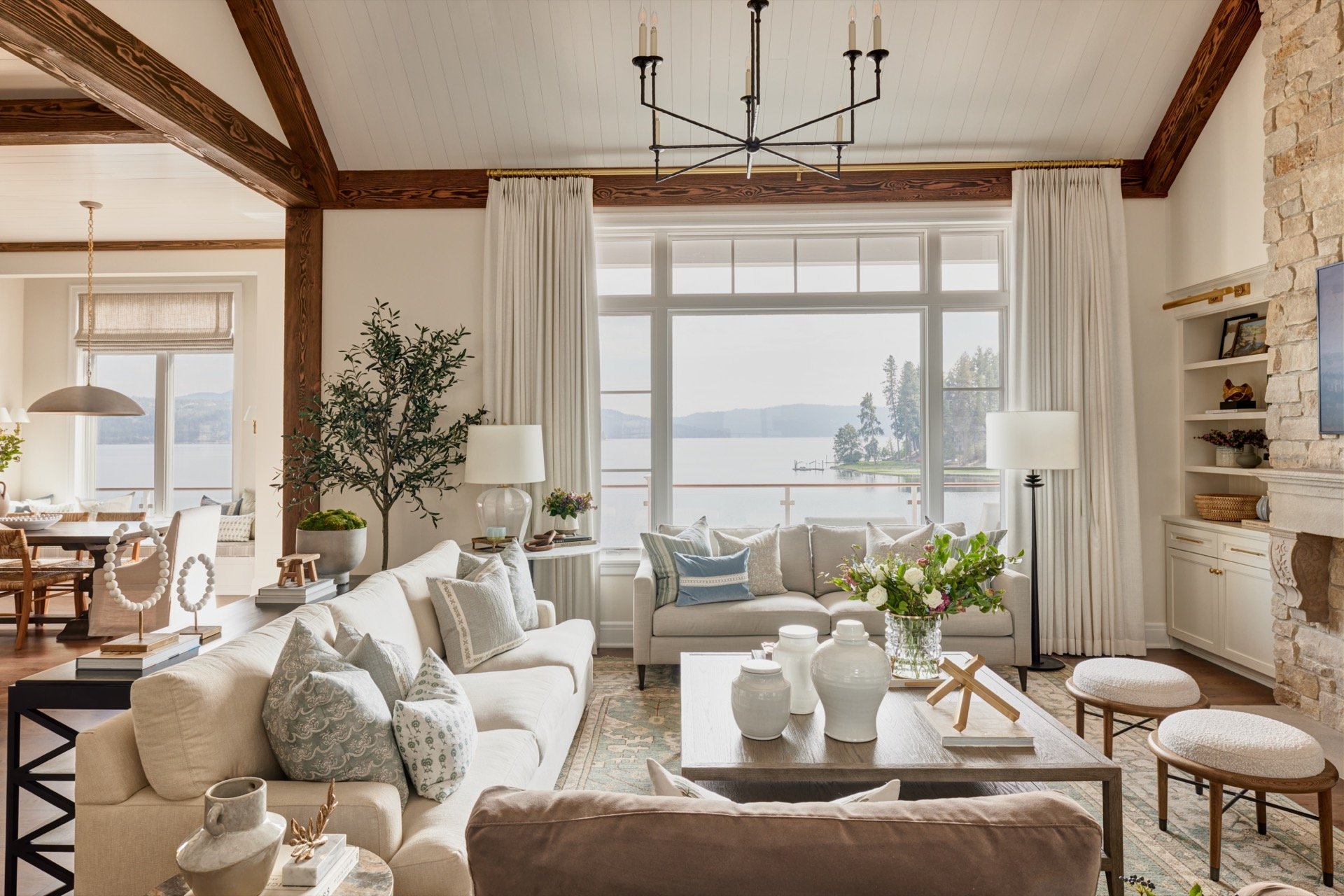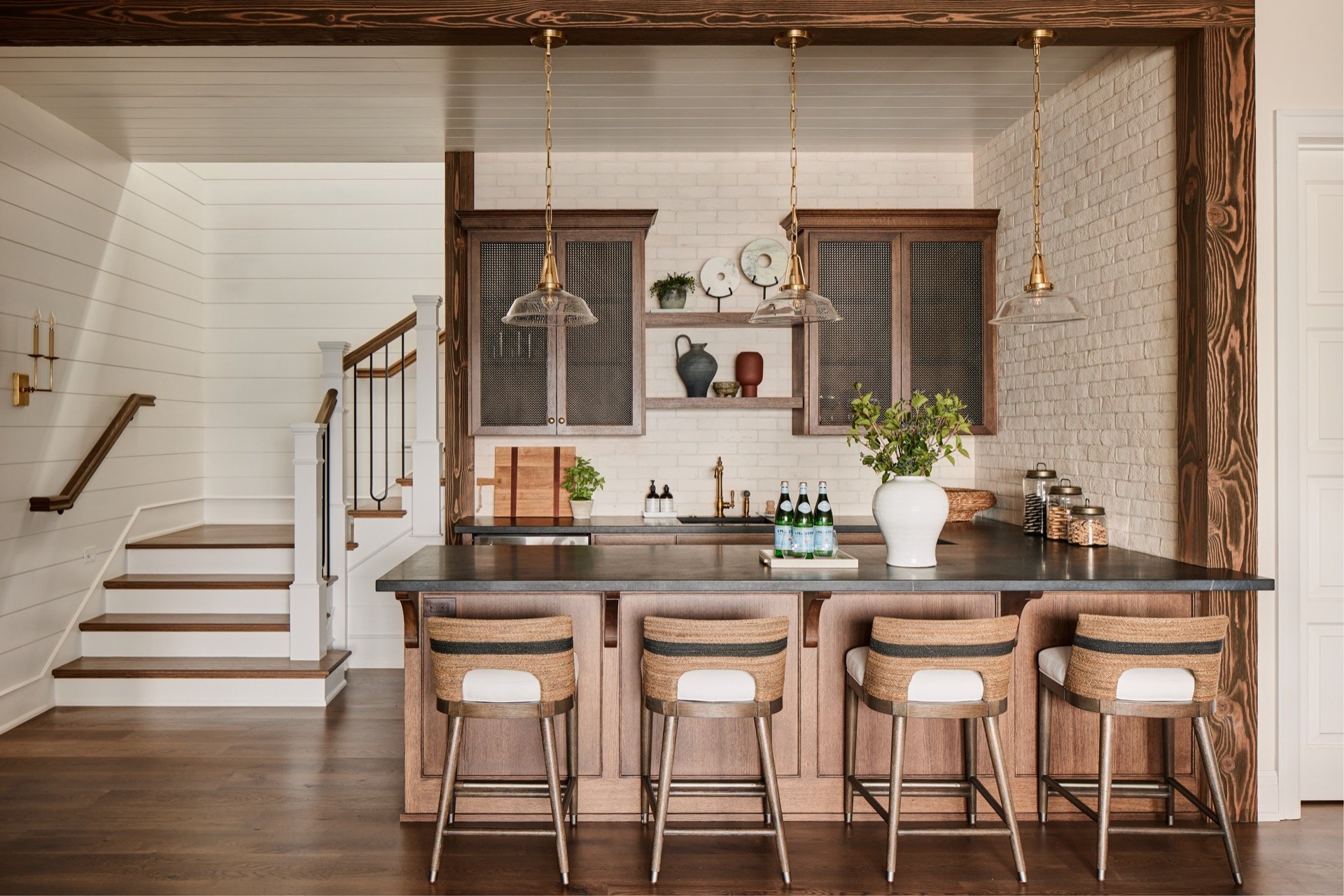How to Mix Wood Tones
Mixing wood tones can feel intimidating because it often seems like one wrong piece will throw the whole room off. You might wonder if your dining table will clash with your flooring or if your side tables should match your coffee table. The truth is that you do not need everything to match (it’s actually better that way).
When you mix wood tones intentionally, your home feels layered, elevated, and collected in a way that looks effortless. Here is how to do it with confidence.
Start with a Dominant Tone
Every room needs one wood tone that takes the lead. Think of it as your anchor. This tone is the one all the other wood pieces will reference. Your dominant tone usually comes from the biggest wood element in the room such as:
Flooring
Built-ins or beams
A large furniture piece like a dining table or media console
Choose this piece intentionally because it sets the direction for everything else.
Designer tip: A medium oak works beautifully as a dominant tone. It has warmth but still reads neutral enough to complement both rich walnuts and lighter cool-toned woods.
Start with a Dominant Tone
Once your dominant tone is in place, begin adding a second or even third wood tone. These should appear in smaller moments such as:
Side tables
Nightstands
Shelving
Accent chairs
Picture frames
The goal is balance. Your secondary tones should support your main one rather than compete with it.
Embrace Contrast
Two wood tones that are almost the same but slightly off can feel accidental. It often looks like a mismatch. A better approach is to lean into contrast. This ensures the choice looks intentional and adds depth. Contrast adds visual interest and makes the room feel curated.
Examples:
Medium oak floors and dark wood cabinetry
A rattan dining chair paired with a dark wood dining table
Pay Attention to Undertones, Texture, and Finish
Wood tones are not just about being light, medium, or dark. Undertones and textures matter just as much. Try repeating an undertone at least once in the space. For example, if your flooring leans warm, echo that warmth in a coffee table, picture frame, or wood decor item.
Finishes: Mixing matte, satin, and glossy finishes is completely fine as long as the overall look still feels cohesive.
Grain and Texture: Smooth-grain woods such as maple can look beautiful next to more pronounced grains like walnut or knotty oak. This contrast helps the room feel layered and visually interesting.
Use Bridging Elements
If your woods feel a bit disconnected, bringing in bridging elements can help soften transitions. Items like woven baskets, leathers, brass or black metals, warm textiles, or a rug with a coordinating undertone can tie the whole palette together. Think of these items as the glue that blends the woods into one harmonious look.
Step Back + Trust Your Eye
Design is part structure and part intuition. After you place your pieces, step back and look at the room as a whole. Ask yourself if anything feels too heavy, too similar, or too loud. Make adjustments from there. Sometimes the combinations that seem unexpected at first become the exact pairing that makes the room memorable.
The takeaway: Mixing wood tones is not about perfect matching. It is about layering, contrast, and subtle harmony. When you choose a clear anchor, repeat undertones, and balance light and dark, your home feels warm, cohesive, and beautifully collected over time.
John Woodcock Photography





